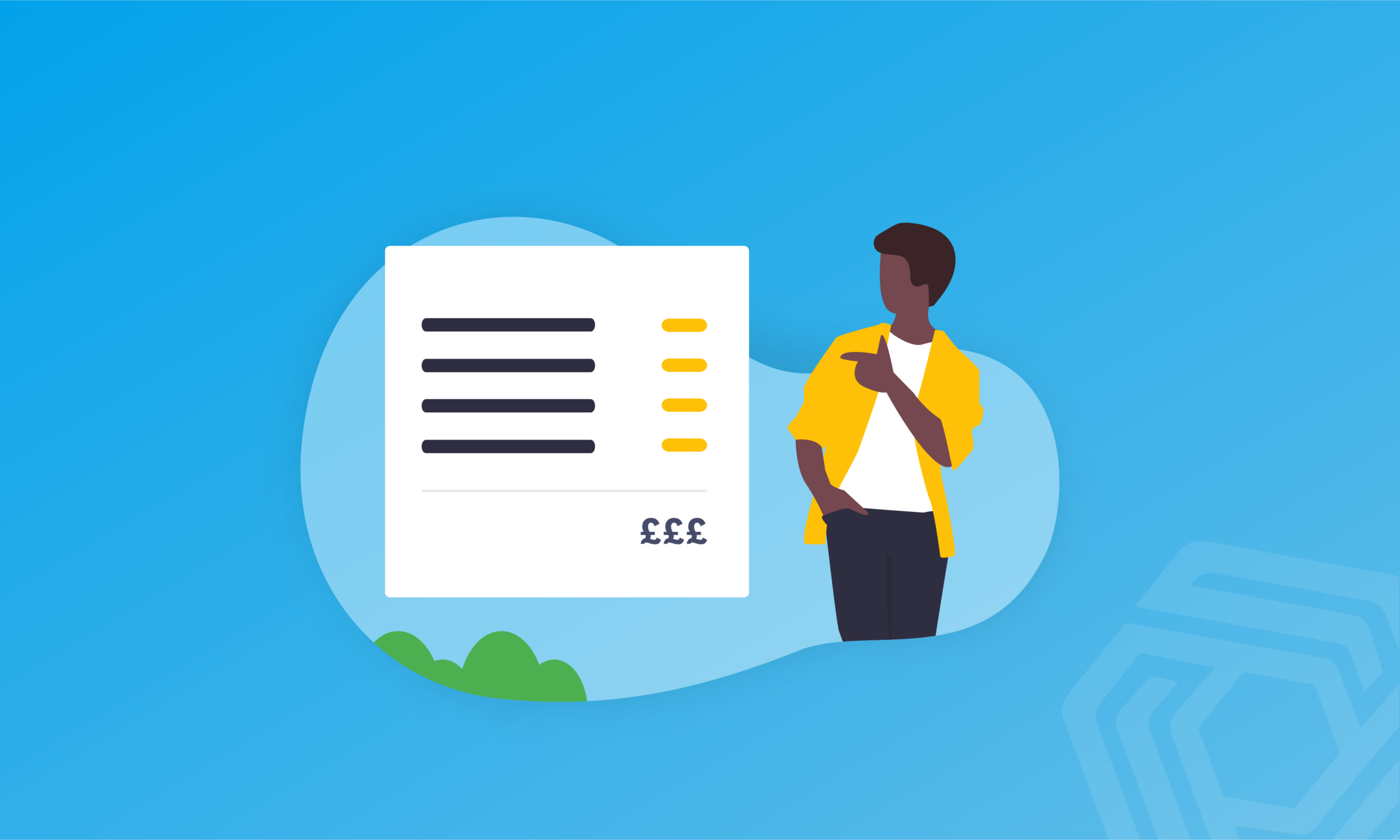Invoicing is a bit like doing the weekly shop. It’s process you’d really rather not have to carry out, but which is a means to a rather appealing end. In the same way you might need to face the supermarket to stock the food cupboard, you’ve got to go through the invoicing motions to reap the financial rewards of all your hard work.
Fear not, though! For we’re here to reduce the tedium of invoicing, with tips to make creating invoices, sending them, and reducing late payments a real breeze.
Creating invoices with Pandle
We’re going to start with the obvious (to us) option first. Generating an invoice using Pandle couldn’t be easier. It’s deliberately designed for your ease and convenience.
We’ve even made it simple to raise an invoice straight from the Pandle mobile app so you can keep your affairs in order whilst on the go.
- Ready-made invoicing template that’s quick and easy to fill in and send.
- The ability to personalise invoices with your company logo, to give invoices a professional finish.
- Populate invoice information using customer profiles, or even schedule recurring invoices.
- The option to split invoices by breaking them down into the specific categories and/or tax codes to take advantage of more sophisticated reporting.
- Automatically assign invoice payments to an existing customer profile.
The best way to structure an invoice
If you’d rather create your own template, there are some core requirements that your invoice should include.
- Mark the document at the very top with the word ‘Invoice’ so that there is no mistaking what the recipient is receiving.
- Display your company name, address and contact details clearly.
- Display the client’s name, company name, address and other relevant details (such as registration number if applicable).
- Include an order number or purchase number if the client provides one, especially for larger organisations. It makes it easier for them to find out who booked the work (and therefore authorise your payment more quickly).
- Include an invoice number generated by you – this should be unique to each individual invoice.
- Provide a description of the goods and/or service(s) provided by you, and the date on which it was fulfilled.
- Provide a breakdown of the agreed rates or costs, as well as the total sum owed to you.
- Clearly outline payment terms, which should be agreed with your client beforehand.
- Include the bank details of the account into which you wish to be paid.
If you are a VAT-registered business, you will also need to include the following information to ensure that you are complying with VAT invoice guidelines:
- Your own VAT registration number.
- The date on which VAT becomes due (commonly referred to as tax point).
- The VAT rate and total VAT amount being charged. This will need to be clearly displayed for each individual item where the amount differs.
Oh, and it’s always nice to add a simple ‘Thank You’ at the bottom of any invoice to show gratitude for your client’s custom!
Time-saving tips to speed up the invoicing process
Creating invoices, emailing them over to various clients, following up to make sure they get paid… And that’s in addition to documenting everything for your accounts as you go. It can seem like a vacuum of time you really can’t afford to accommodate.
The invoicing process really is part-and-parcel of running a business, and things will grind to a halt pretty quickly without it. One of the best ways to make it work in your favour is to make the whole ordeal more accurate and efficient, whilst saving time.
Automate as much as possible
Technology, especially cloud-based accounting software, can do a surprising amount of the heavy lifting for you.
Look for features such as bulk invoice emailing, automated reminders and the ability to create recurring invoices. These will take care of the time-consuming tasks for you, without losing out on important client communication-points. It’s also worth looking out for software which reduces duplication, for instance by automatically converting a quote into an invoice.
Not only will this help reduce the risk of human error, it streamlines work so your valuable time can be spent elsewhere.
Make client information accessible
Whether you set up client profiles on your bookkeeping software, or keep a word doc on your desktop, keep client information to hand. You won’t have to go rooting through email threads or Google searches each time you need to invoice a client.
You’ll either be able to populate the template automatically, or at the very least – copy and paste the information!
Create invoices that improve payment times
Deal with invoicing and the subject of late payments is usually not far behind. Clients who are late making payments are, sadly, still far too common. To help you minimise the problem:
- Triple check the information on your invoice before sending it. Even tiny errors can result in unnecessary delays.
- Use online payments or bank transfers where possible, making it more convenient (and faster) for customers to pay.
- Create payment reminders which automatically remind customers of unpaid invoices, even before the payment deadline passes.
Interested in finding out more about how Pandle can help streamline your bookkeeping and accounts? Create your free account to start exploring.
